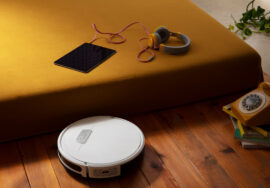
Smart TV Buying Guide: OLED vs. QLED vs. Mini-LED – Which Should You Choose?
Introduction: Choosing the Right Smart TV in 2025
Televisions have come a long way from bulky CRT sets to sleek, high-resolution smart displays. In 2025, the TV market is dominated by three major display technologies—OLED, QLED, and Mini-LED. Each promises superior brightness, contrast, and color accuracy, but with so many options, buyers often struggle to pick the right one. For readers of Tech Reviews, this guide explains the strengths and weaknesses of each display type, helping you make a purchase that fits both your viewing needs and budget.
Understanding Display Technology Basics
Before diving into comparisons, it’s essential to understand what makes these displays different.
- OLED (Organic Light-Emitting Diode) uses self-lighting pixels, meaning each pixel can turn on or off independently. This creates perfect blacks and excellent contrast.
- QLED (Quantum Dot LED) is essentially an LCD panel enhanced with quantum dots for brighter and more vivid colors, powered by a backlight.
- Mini-LED uses thousands of tiny LED backlights, offering more precise control over brightness zones compared to traditional LED, resulting in better contrast and HDR performance.
With these fundamentals in mind, let’s examine how each technology performs in real-world conditions.
Picture Quality: Blacks, Brightness, and Color
The main reason buyers consider premium TV technology is picture quality.
- OLED – Known for its infinite contrast ratio, OLED displays produce perfect blacks by turning off individual pixels. Movies and dark scenes look stunning. However, OLEDs generally aren’t as bright as their QLED or Mini-LED counterparts.
- QLED – With quantum dot technology, QLED TVs deliver intense brightness and vibrant colors. This makes them ideal for bright rooms but they can’t achieve the same deep blacks as OLED.
- Mini-LED – These TVs sit in between OLED and QLED. While not offering OLED-level blacks, they provide excellent brightness and improved contrast compared to standard LED thanks to precise backlight control.
For cinema lovers in dim rooms, OLED leads. For sports or daytime viewing, QLED and Mini-LED have the advantage.
Viewing Angles and Motion Performance
A TV should perform consistently no matter where you sit.
- OLED – Delivers wide viewing angles, making it ideal for group movie nights or living rooms where people sit at different spots. Motion handling is also excellent, making fast-moving action look smooth.
- QLED – Viewing angles are more limited, with colors and contrast diminishing off-center. However, some premium QLEDs use advanced panel designs to reduce this effect.
- Mini-LED – Similar to QLED since it’s built on the same LCD foundation, though better dimming helps reduce blooming and maintain quality at different angles.
If you host large gatherings or watch from different spots, OLED is the most consistent choice.
Gaming Performance: Input Lag and Refresh Rates
Gaming has become a significant factor in TV purchases.
- OLED – Offers near-instant pixel response times, making gameplay smooth with minimal ghosting. Many OLEDs also support 120Hz refresh rates and HDMI 2.1 features.
- QLED – Provides excellent input lag reduction and high refresh rate support. Brightness levels make games pop, though motion blur can be more noticeable than OLED.
- Mini-LED – Combines QLED brightness with enhanced contrast, making it a strong option for gamers who want balance between visuals and responsiveness.
For competitive gamers, OLED remains the top pick, while Mini-LED offers a great balance of performance and price.
Lifespan and Burn-In Risks
Durability is a major concern for long-term buyers.
- OLED – While modern OLEDs have improved, there is still a small risk of burn-in if static images (like channel logos) remain on screen for long periods.
- QLED – No burn-in risks, and panels generally last longer under heavy use.
- Mini-LED – Similar to QLED, offering long lifespans without burn-in issues, making them ideal for households that watch diverse content.
If you want peace of mind and long durability, QLED and Mini-LED have the edge.
Price and Value for Money
Cost plays a huge role in buying decisions, and each technology falls into a different range.
- OLED – Prices have dropped but remain premium. Entry-level OLEDs start around $1,000–$1,200 for 55-inch models.
- QLED – More affordable, with mid-range models often starting around $700, making them attractive for budget-conscious buyers.
- Mini-LED – Typically priced between QLED and OLED, offering near-premium performance at a lower cost than OLED.
From a Tech Reviews perspective, Mini-LED currently offers the strongest balance between price and performance.
Best Use Cases for Each Technology
To simplify your choice, here’s where each technology shines the most:
- OLED – Best for home theaters, movie enthusiasts, and gamers who value perfect blacks and wide viewing angles.
- QLED – Best for bright living rooms, sports fans, and general family viewing.
- Mini-LED – Best for those wanting premium quality without OLED pricing, balancing contrast, brightness, and affordability.
Expert Opinion: The Future of TV Technology
Industry experts suggest OLED will remain the gold standard for picture quality, but Mini-LED is rapidly gaining traction as the best value alternative. Meanwhile, QLED is evolving with better panel designs and still appeals to buyers who prioritize brightness and affordability. Over the next few years, expect manufacturers to blend these technologies with AI-driven picture enhancements, making Smart TVs more adaptive and personalized.
Conclusion: Which Should You Choose?
The best Smart TV depends on your viewing habits and budget.
- Choose OLED if you want unmatched contrast, cinematic quality, and smooth motion.
- Choose QLED if you prioritize brightness, vibrant colors, and durability.
- Choose Mini-LED if you’re looking for a strong balance of features and price.
At the end of the day, all three technologies deliver outstanding performance compared to older LED TVs. The decision lies in whether you value deep blacks, brightness, or affordability most. Whichever you choose, today’s Smart TVs are designed to elevate your entertainment experience and deliver exceptional value for years to come.







